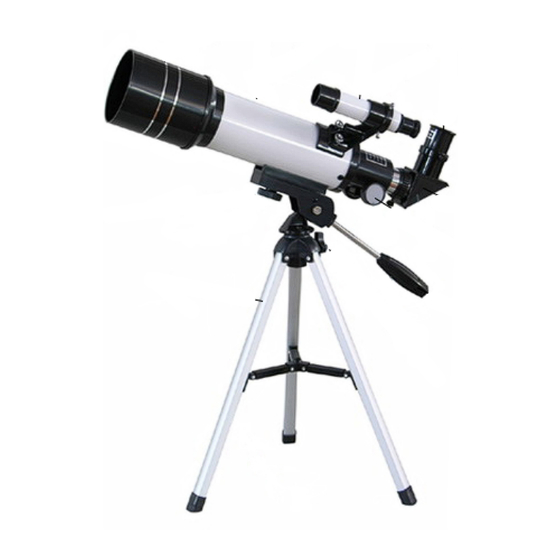
Table of Contents
Advertisement
Advertisement
Table of Contents

Summary of Contents for Nipon Optics F300X70M
- Page 1 NIPON F300X70M Astronomical and Terrestrial Telescope Instruction Manual...
- Page 2 Main parts of your telescope: WARNING Never look directly at the Sun or anywhere near the Sun with a telescope, or permanent and irreversible eye damage may occur! Do not let children use a telescope without adult supervision at any time when the Sun is above the horizon.
- Page 3 Introduction CONTENTS Congratulations on purchasing your new Telescope parts ..2 telescope. We hope it will give you many years of enjoyment as it opens your eyes Warning ....2 to some nature’s most wondrous sights.
- Page 4 Assembly Remove all of the items from the box and lay them out so that you can clearly identify each part. Check that you have all the parts in the package. Keep the box for storage, or if you ever need to return the telescope for service.
- Page 5 2) Let your telescope adjust to the outside temperature. The telescope will perform much better if the lenses and the air inside the tube are all the same temperature as the outside environment. This process may take up to 1/2 hour if there is a huge difference between the temperature inside and outside the telescope.
- Page 6 Keeping the dust caps on during storage of the telescope will reduce the amount of dust collected. After using the telescope there might be dew condensation on the optical surfaces. When the telescope is brought inside remove the dust caps and allow the moisture to evaporate naturally.
- Page 7 The Planets The planets are our solar system companions. These range in size from the Moon size rocky bodies to giant gas balls which could hold 1000 Earths. To find the planets requires some information as to when they are visible. An astronomy magazine such as Sky at Night, Space, or Astronomy, will give you the locations of the planets from month to month.

Need help?
Do you have a question about the F300X70M and is the answer not in the manual?
Questions and answers